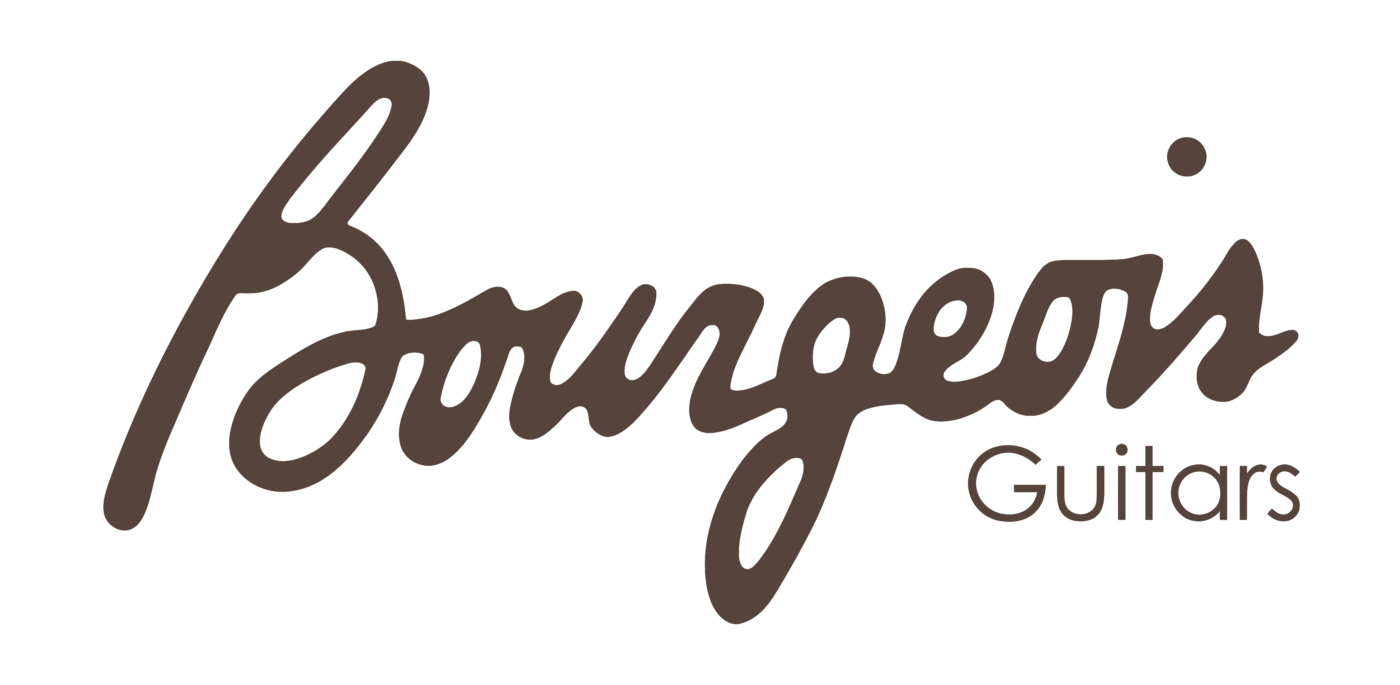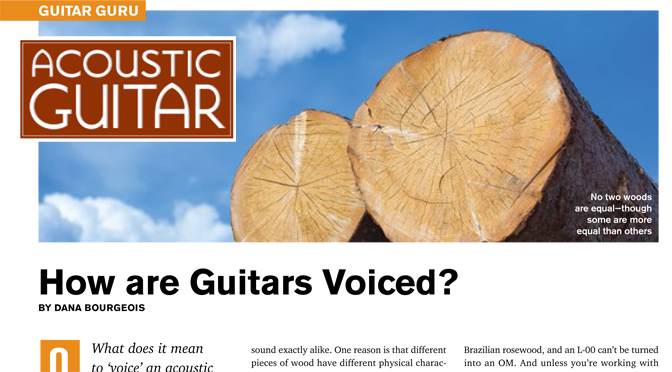Guitar Guru
Guitar Guru – Voicing
Dana Bourgeois contributes the monthly Guitar Guru column to Acoustic Guitar Magazine. If you a question you’d like Dana to address in an upcoming article, please submit it to [email protected].
Download the PDF of this article here
How are Guitars Voiced?
G: What does it mean to ‘voice’ an acoustic guitar, and how are guitars voiced? How do I know if I’m buying a guitar that has been hand-voiced? —RICHARD FERGUSON, EL CERRITO, CALIFORNIA
A: In my view, the sound of a guitar is primarily attributable to its design and to the individual woods that it’s made from. Voicing is a process of optimizing the interaction between these two variables. A dreadnought sounds recognizably like a dreadnought, regardless of the woods used. Change minor design elements and it still sounds like a dreadnought. A mahogany dreadnought, though, does sound different from a rosewood dreadnought. Just ask any bluegrass player. And a reasonably experienced ear can hear similarities between a mahogany D and most other mahogany guitars. But no two mahogany dreadnoughts, even of identical construction, sound exactly alike. One reason is that different pieces of wood have different physical characteristics, which may include grain orientation, long and cross-grain stiffness, density, velocity of sound, damping factors, etc.
Players sometimes ask if one piece of wood is inherently better than another. My short answer is that most wood isn’t at all suitable for making fine guitars, and only a tiny fraction of all wood is so magical that it sounds amazing, no matter how it’s used. Between those extremes, other woods can make outstanding guitars, though only if treated properly.
Here’s where voicing comes in.
Most players understand that voicing involves brace carving. But voicing can also involve selecting wood because it’s better for one type of guitar than another, thicknessing for a specific soundboard span or bracing system, graduating a soundboard edge to compensate for variable stiffness, setting a neck to a specific bridge height to control string load, or even applying a custom finish to compliment other sonic factors. In my book, voicing involves any procedure or combination of procedures intended to optimize the way individual woods work in the context of a selected guitar design.
There are, of course, limits to what voicing can accomplish. Mahogany can’t be turned into Brazilian rosewood, and an L-00 can’t be turned into an OM. And unless you’re working with one of those magical tops, tuning to a specific resonant frequency might well sacrifice some other desirable characteristic.
Because every maker has a different idea of what a guitar should be, it should come as no surprise that methods of voicing are correspondingly diverse.
And while it’s generally believed that individual luthiers engage in more hand-voicing than larger makers, premium production shops, informed by an enormous wealth of experience, frequently lavish equivalent voicing attention on individual guitars.
It’s difficult for players to know how much hand-voicing any guitar has received. But if a guitar sounds great, does this really matter? I’ve had memorable brainstorming conversations with Bob Taylor about voicing guitars using industrial engineering and robotics, and have no doubt that a well-engineered, automated system could produce better guitars than building to strictly uniform dimensions. The brave new world may be upon us someday soon, folks, because the technology already exists.

